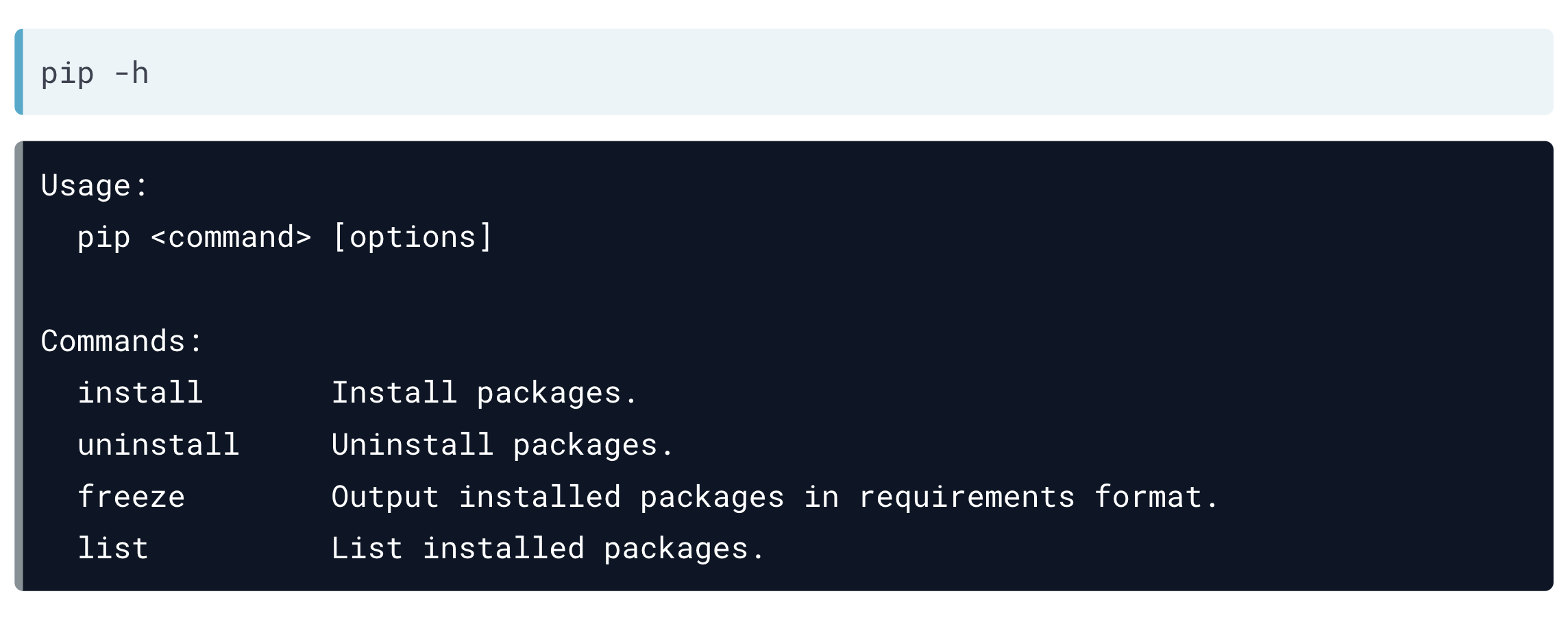- Apt-get Install Python3-prettytable
- Install Prettytable Python Software
- Install Prettytable Python3 Ubuntu
- Install Prettytable Python Online
- Prettytable python title; prettytable in pytho;n; preetytable python column width; prettytable python example; python libary for creating tables; import prettytable; prettytable mac; install prettyTable python 3.9; how to install prettytable python on 3.9; pip install prettytable; datascroller prettytable python; install prettytable.
- If you have your table data in a database which you can access using a library which confirms to the Python DB-API (e.g. An SQLite database accessible using the sqlite module), then you can build a PrettyTable using a cursor object, like this.
Python module for creating simple ASCII tables. This module is available on PyPI, and has been packaged for several Linux/Unix platforms (Debian, FreeBSD, Fedora, Suse.). If available, cjkwrap library is used instead of textwrap, for a better wrapping of CJK text. If available, wcwidth library is used for a better rendering (basic emoji support).
Latest versionReleased:
A simple Python library for easily displaying tabular data in a visually appealing ASCII table format

Project description
PTable is a simple Python library designed to make it quick and easy torepresent tabular data in visually appealing ASCII tables, originallyforked from PrettyTable.
Installation
As PTable is a fork of PrettyTable, and compatible with all its APIs,so PTable is usage is the same as PrettyTable, and the installationwould cover on the original PrettyTable.
As always, you can install PTable in 3 ways.
Via pip (recommend):
Via easy_install:
From source:

Quick start
PTable supports two kinds of usage:
As a library
PTable library API is almost as PrettyTable, you can import the same API fromprettytable library:

A better hosted document is hosted on ReadTheDocument.
As command-line tool
This is an original function of PTable, can be used as ptable command:
or a Unix style pipe:
Will both print a ASCII table in terminal.
Relative links
Release historyRelease notifications | RSS feed
Download files
Download the file for your platform. If you're not sure which to choose, learn more about installing packages.
| Filename, size | File type | Python version | Upload date | Hashes |
|---|---|---|---|---|
| Filename, size PTableUnicode-0.9.3.tar.gz (22.0 kB) | File type Source | Python version None | Upload date | Hashes |
Hashes for PTableUnicode-0.9.3.tar.gz
| Algorithm | Hash digest |
|---|---|
| SHA256 | 2ee4e3551e981344e562e08a96e5f057569ae574eda32dc821477b37daf7391b |
| MD5 | 2c0a6fbd145debcc0428d7d42691a928 |
| BLAKE2-256 | 0f667e414989a61b250877bbf1bc3f3480700b699ab0efebf70e6530496c1f66 |
When we click an image using a digital camera, or our mobile devices. The camera uses the Exchangeable Image File Format (EXIF) standards to store the Image. The EXIF standards use the metatags to specify the information about the image itself.
And if you want to access that metadata for the EXIF Standard Images in Python then you need to use an Image Handling Python Library. To handle Images in Python we generally use the most popular Python Image handling Libary Pillow.
Here in this Python tutorial, I will walk you through the Python program that will extract the useful metadata from the Digital Image.
So before getting started with the Python program let’s Install the required Library.
Install Python pillow Library
Pillow is the defacto Python Image handling library, and many Python image processing and machine learning libraries are built on the pillow.
To install pillow for your Python environment run the following pip install command on your Command Prompt(Windows) or Terminal(Linux/macOS)
Install Python prettytable Library
The prettytable is a Python open-source library that is used to print data in a tabular format. We will be using this Library in this tutorial to print all the metadata information in a table format.
To install prettytable for your Python Environment use the following pip install command.
For this tutorial, I will be using the following Image image.jpgthat I have clicked with my mobile device.
How to Extract Image Metadata in Python?
Now open your best Python IDE or Text editor and follow along.
Let’s start with importing the Pillow required modules.
Now set a Python Identifierimage_filename which holds the name file name of the Image. And also initialize the prettytable library’s PrettyTable() module object, and set its fields.
Now load the image in our Python script using the Image module.
Now let’s get the EXIF data of the loaded image using getexif() method.
The getexif() method only returns the tags IDs, and their values, not the tag names, that’s why we have also imported the PIL.ExifTags TAGS that can retrieve the EXIF tag name based on its ID. Now we will loop through the IDs present in the img_exif_data and get their tag names using the TAGS.get() method and values using img_exif_data.get() method.
Apt-get Install Python3-prettytable
Some of the EXIF data present in the binary format (bytes), that’s why we have decoded it into the human-readable format using data.decode() method.
Now put all the code together and execute
#Python program to Extract metadata from an Image File.
Install Prettytable Python Software
Output
From the output, You can see that the program print all the metadata about the image. It also displays the GPS coordinates where the image had been clicked.
Install Prettytable Python3 Ubuntu
Conclusion
Install Prettytable Python Online
In this Python tutorial, you learned “How to extract MetaData information of an Image in Python”. The MetaData contains all the information based on the EXIF Standards. I would suggest you use the mobile clicked image when you are extracting the EXIF metadata information. You can also extract the Geolocation coordinates from the image and write a Python program to find the physical address of the clicked image.